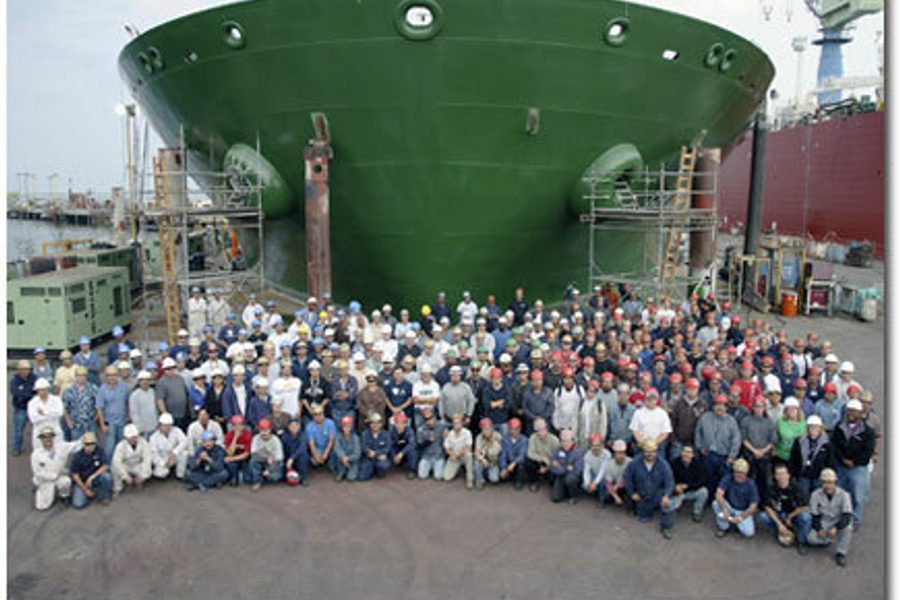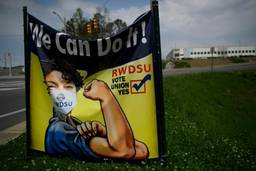
The congressional budget stalemate combined with America’s still-stagnant economy means that in coming months at least 350 largely union workers will be laid off from a San Diego shipyard that builds and repairs Navy warships. Up to 1,500 could be laid off by the end of the year, out of a total workforce of about 3,600.
In late March, workers at the General Dynamics NASSCO (National Steel and Shipbuilding Company) shipyard got notice under the WARN Act that they’d be laid off in May and June. The company blamed Navy ship repairs delayed or foregone because of Congress’s failure so far to pass the fiscal year 2011 Defense Appropriations bill. Even if the bill is passed, many layoffs will occur, the company said, because of downturns in the commercial shipping market.
The majority of NASSCO’s workers are unionized, in the Shipyard Workers Union Local 1998, an independent union that merged with the International Brotherhood of Boilermakers; and also the International Association of Machinists. The shipyard is the West Coast’s largest ship building and repair facility, having built 11 Navy ships, with three more in the works. Currently the 844-foot-long amphibious assault ship Bonhomme Richard is getting repaired.
The shipyard also builds and repairs commercial oil tankers and dry cargo ships — but during the economic crisis, that sort of business has been way down.
The Port of San Diego has also negatively affected by (and likely suffer job losses from) the decline in cruise ships due to the Great Recession and the drug war in Mexico, where many cruises that embark from San Diego are headed. San Diego saw its cruise ship business decline by a third last year, and the company Carnival pulled one of its ships from San Diego and will move another one to Australia next year.
Commercial container and bulk commodity shipping is likewise down because of the economic crisis. Dole is the only container shipper at the San Diego port, with most container ships going to the port of L.A.-Long Beach to the north. Local and national environmental groups have pushed Dole to speed up its implementation of electric shore power, meaning it would power its refrigerated ships by electricity while at berth instead of burning dirty diesel fuel, causing significant harmful air pollution for surrounding, mostly low-income Latino communities. (Trucks going to the Dole warehouse also cause serious pollution.)
Dole will have to electrify two of its three ships at berth by 2014, but there’s speculation that the company will switch to another port rather than making that investment. Its lease at the Port of San Diego is up at the end of 2012, and the company has announced it is considering a move to the Port of Hueneme further north in California.
“Dole needs a huge amount of power at port because they have to keep fruit cold – it’s like a floating garage, so it has high emissions,” said Joy Williams, research director of the Environmental Health Coalition in San Diego, which has pushed the port and Dole to increase electrification at shore. “We don’t know if they’ll do it or leave. We’d been pushing them and the port to go for grant funding to retrofit ships and build infrastructure before the deadline.”
Losing Dole could mean reduction in work for the International Longshore and Warehouse Union (ILWU) and other workers in San Diego. Over the past few years, the union has battled with Dole over its use of nonunion foreign workers to unload ships.

I hope you found this article important. Before you leave, I want to ask you to consider supporting our work with a donation. In These Times needs readers like you to help sustain our mission. We don’t depend on—or want—corporate advertising or deep-pocketed billionaires to fund our journalism. We’re supported by you, the reader, so we can focus on covering the issues that matter most to the progressive movement without fear or compromise.
Our work isn’t hidden behind a paywall because of people like you who support our journalism. We want to keep it that way. If you value the work we do and the movements we cover, please consider donating to In These Times.
Kari Lydersen is a Chicago-based journalist, author and assistant professor at Northwestern University, where she leads the investigative specialization at the Medill School of Journalism, Media, Integrated Marketing Communications. Her books include Mayor 1%: Rahm Emanuel and the Rise of Chicago’s 99%.







